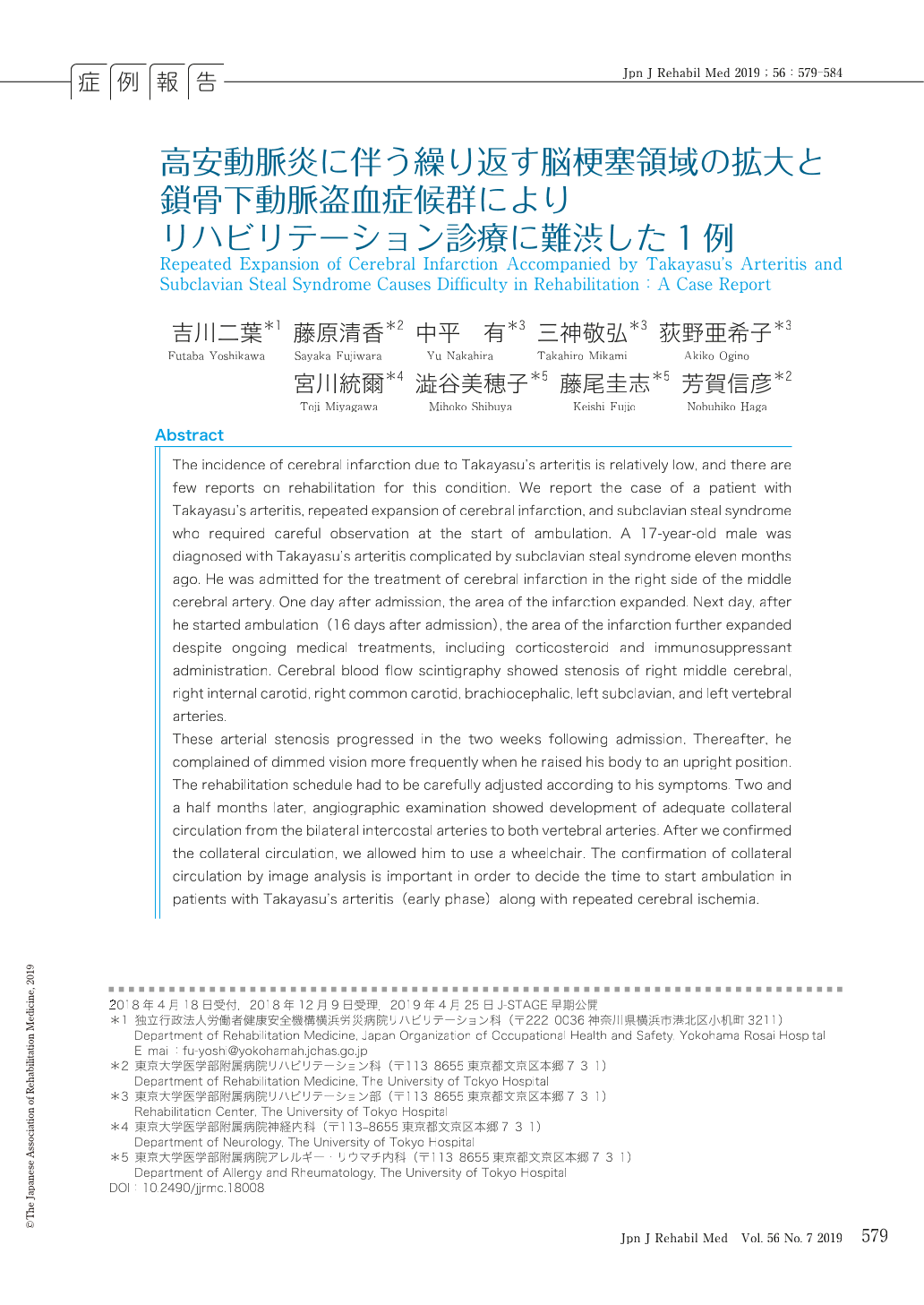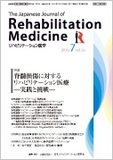Japanese
English
- 販売していません
- Abstract 文献概要
- 1ページ目 Look Inside
- 参考文献 Reference
Abstract
The incidence of cerebral infarction due to Takayasu's arteritis is relatively low, and there are few reports on rehabilitation for this condition. We report the case of a patient with Takayasu's arteritis, repeated expansion of cerebral infarction, and subclavian steal syndrome who required careful observation at the start of ambulation. A 17-year-old male was diagnosed with Takayasu's arteritis complicated by subclavian steal syndrome eleven months ago. He was admitted for the treatment of cerebral infarction in the right side of the middle cerebral artery. One day after admission, the area of the infarction expanded. Next day, after he started ambulation (16 days after admission), the area of the infarction further expanded despite ongoing medical treatments, including corticosteroid and immunosuppressant administration. Cerebral blood flow scintigraphy showed stenosis of right middle cerebral, right internal carotid, right common carotid, brachiocephalic, left subclavian, and left vertebral arteries.
These arterial stenosis progressed in the two weeks following admission. Thereafter, he complained of dimmed vision more frequently when he raised his body to an upright position. The rehabilitation schedule had to be carefully adjusted according to his symptoms. Two and a half months later, angiographic examination showed development of adequate collateral circulation from the bilateral intercostal arteries to both vertebral arteries. After we confirmed the collateral circulation, we allowed him to use a wheelchair. The confirmation of collateral circulation by image analysis is important in order to decide the time to start ambulation in patients with Takayasu's arteritis (early phase) along with repeated cerebral ischemia.
The incidence of cerebral infarction due to Takayasu's arteritis is relatively low, and there are few reports on rehabilitation for this condition. We report the case of a patient with Takayasu's arteritis, repeated expansion of cerebral infarction, and subclavian steal syndrome who required careful observation at the start of ambulation. A 17-year-old male was diagnosed with Takayasu's arteritis complicated by subclavian steal syndrome eleven months ago. He was admitted for the treatment of cerebral infarction in the right side of the middle cerebral artery. One day after admission, the area of the infarction expanded. Next day, after he started ambulation (16 days after admission), the area of the infarction further expanded despite ongoing medical treatments, including corticosteroid and immunosuppressant administration. Cerebral blood flow scintigraphy showed stenosis of right middle cerebral, right internal carotid, right common carotid, brachiocephalic, left subclavian, and left vertebral arteries.
These arterial stenosis progressed in the two weeks following admission. Thereafter, he complained of dimmed vision more frequently when he raised his body to an upright position. The rehabilitation schedule had to be carefully adjusted according to his symptoms. Two and a half months later, angiographic examination showed development of adequate collateral circulation from the bilateral intercostal arteries to both vertebral arteries. After we confirmed the collateral circulation, we allowed him to use a wheelchair. The confirmation of collateral circulation by image analysis is important in order to decide the time to start ambulation in patients with Takayasu's arteritis (early phase) along with repeated cerebral ischemia.

Copyright © 2019, The Japanese Association of Rehabilitation Medicine. All rights reserved.


